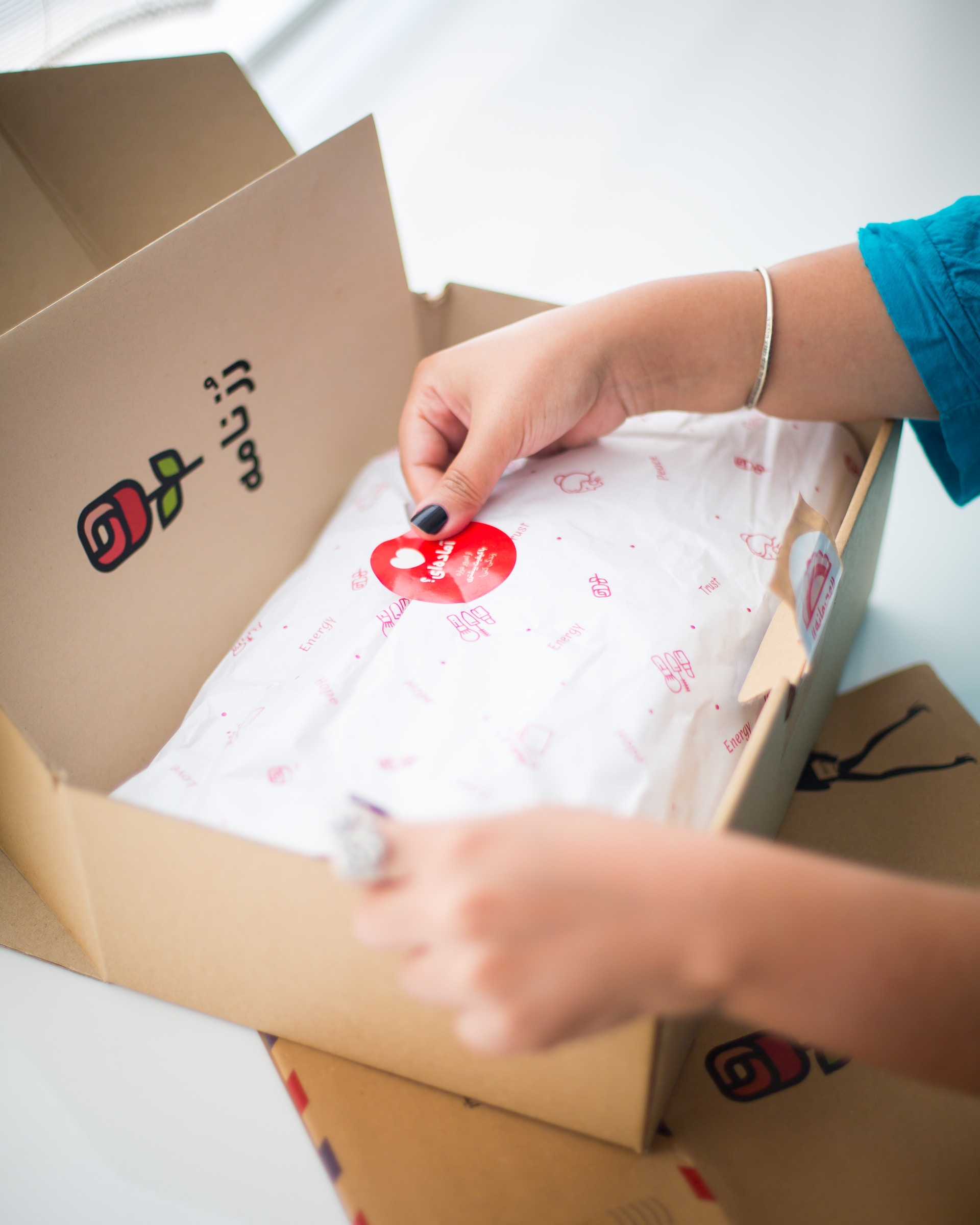 How to Scale Your Business With 3PL Providers
How to Scale Your Business With 3PL Providers
In today's hyper-competitive market, customer expectations are soaring. With the rise of e-c...
Read More
Understanding how to prepare for Black Friday in E-commerce is vital to taking full advantag...

Understanding how to prepare for Black Friday in E-commerce is vital to taking full advantage of the holiday sales’ potential to drive revenue growth for your business. In 2022 alone, E-commerce businesses on Shopify managed to smash records, generating $3.36bn in total global sales—and experts predict this statistic to be outdone yet again in 2023, given the 4.8% year-on-year growth of retail sales during the period.
This guide will give you some of the latest, tried-and-tested E-commerce tips for Black Friday advertising, allowing you to make the most of the Black Friday sales. We’ll explore the history of Black Friday before discussing how to begin preparing—from analysing your sales data from past years to defining your goals and beyond.
After this, we explore how to prepare for Black Friday in E-commerce. We’ll highlight the importance of inventory management and order fulfilment alongside the best promotions and discounts to offer customers, helping you to enhance your E-commerce strategy.
The Black Friday holiday sales were first referred to in the Journal of Factory Management and Maintenance in November 1951, initially referring to the phenomenon of workers calling in sick on the day after Thanksgiving.
Its first use as a term to refer to the shopping day was during the early 1960s, when Philadelphia police officers would highlight the need to control the significant influx of shoppers, gaining momentum with each year that passed. By the late 1980s, the term had come to be associated with the positive surge in retail sales as the “red-to-black” narrative spread between merchants.
Luckily, digital business leaders in 2023 no longer have to worry about managing the physical crowds. However, understanding how to prepare for Black Friday in E-commerce has taken its place as a major challenge for those looking to maximise their revenue growth.
So, what should business owners and strategists do to set the stage for Black Friday success in 2023?
When it comes to understanding how to prepare for Black Friday in E-Commerce, the first step is to set clear goals for yourself and your team. How do you do this? Well, by analysing data from previous years.
There’s plenty of information to look at here, but some critical areas are:
Understanding these data points will not only make it easier to set fresh goals and targets for the coming sales, but it will also enable you to target your Black Friday advertising efforts in a way that maximises your return on investment.
If the majority of users are browsing your site on their mobiles, for instance, it will pay dividends to ensure that your mobile site is fully optimised for an excellent customer journey. This is a point that we’ll explore in our section on the importance of a smooth checkout process, but by guaranteeing that your customers aren’t frustrated by broken or ineffective web design, you can truly set yourself apart from the competition.
Similarly, if the channels that drive the most sales are your email marketing communications and posts on your Instagram page, you can target your advertising efforts there, which will help you to ensure that they’re more likely to convert into sales.
As always in business, it’s best that your goals are SMART—that is, that they’re specific, measurable, achievable, relevant, and time-bound. The time-bound part is already covered, of course, since we’re talking about how to prepare for Black Friday in E-commerce environments, but it’s crucial that the other aspects of SMART targets are also considered to ensure that you’re getting the best results possible.
When it comes to the other four elements, you can approach them from a number of angles:
Now we’ve understood how to set goals, we can look in a bit more detail at how to prepare for Black Friday in E-commerce from an in-depth perspective. Let’s start with discussing how to effectively create a Black Friday advertising content calendar, which will help you to reach out to customers and see a return on investment.
Two-thirds of buyers make a purchase they weren’t planning for based on discovering a coupon or discount. Similarly, 86% of Millennial shoppers and 76% of Gen Z shoppers are enticed into purchasing decisions through promotions.
As a result, when it comes to understanding how to prepare for Black Friday in E-commerce sectors, it’s vital to know that your advertising is reaching your customers where they’re most likely to spend their time and developing a content calendar that inspires action.
You should begin planning your Black Friday advertising content calendar during the first few weeks of October, giving you enough time to think through your ideas for enticing content and designing effective templates for your emails. Alongside this, it’ll give you the right amount of time to communicate shipping cut-off dates to your customers, giving you a timeline to work towards.
As we’ll explore in the next section, the speed of getting parcels to people is vital in E-commerce, with many customers expecting next-day delivery for their products. If you offer discounts on shipping during the Black Friday sales alongside using countdown timers, you can create a sense of urgency and drive purchasing behaviour.
Similarly, you can double up on your marketing efforts and promote these offers on your social media pages. Email templates can be quickly turned into posts that can be leveraged on sites such as X (formerly Twitter) and Instagram, whilst the written content of your emails can be used on your Facebook page to generate discussion and conversation.
Similar to tracking your overall goals for the season, make sure to set targets for your social media and email marketing, too. These analytics can help you to understand what worked well and what could be improved for future holiday sales.
70% of shoppers abandon purchases at the final shopping cart stage. Therefore, it’s a business-critical consideration for anyone looking to understand how to prepare for Black Friday in E-commerce to ensure that they’re providing customers with the most pain-free, optimised experience possible when they browse their shopfront.
Abandonment rates at the shopping cart stage are typically due to poor user experience, with pop-ups, slowdowns, and poor mobile optimisation often to blame. Alongside these, hidden extra costs that are applied at checkout, slow delivery options, and forcing users to create accounts to make a purchase will often lead to disgruntled potential buyers looking to your competitors for a similar product.
Instead, highlight all costs upfront, ideally on the product page, and offer a range of delivery options. Don’t overcomplicate the checkout process, and offer the option for users’ browsers to automatically fill all of the address and payment fields if they have that information saved on their devices. Similarly, allow users to carry out a guest checkout on your site since they may not wish to commit to creating an account with you yet.
By improving the design and development of your E-commerce checkout process, you can achieve a roughly 35% increase in conversions, meaning that user-friendliness is in every E-commerce business leader’s best interests.

Now that we’ve understood the importance of a strong foundation during the holiday sales season’s planning phase, let’s explore preparation tips for Black Friday in E-commerce. From stock management, order fulfilment, and post-Black Friday performance evaluation, the following suggestions will help you to make the most of the season.
When it comes to understanding and addressing your inventory and order fulfilment challenges, we often consider overstocking as a response to the risk of stockout when a product becomes unpurchaseable due to a lack of availability. Roughly 9% of potential customers will simply not purchase an item if it’s out of stock, so getting this part of the equation right is vital to ensuring success with your E-commerce strategy.
But how can it be done?
The first step is to, of course, implement effective inventory management. This will be based on the first step taken in our guide, where you’ll look at trends and analyse past years’ data for holiday sales, which will give you an idea of the number and type of products that are being purchased on Black Friday.
Inventory management software can help streamline the complex task of keeping track of SKUs, availability, and where products are being stored, giving you real-time insight into your stock levels. It can even analyse your sales data, helping you to predict demand and automatically reorder stock when your inventory levels reach a predetermined threshold.
Working closely with suppliers can facilitate the implementation of a just-in-time (JIT) inventory management system. This system enables rapid inventory receipt as needed, reducing the potential risks of overstocking—such as higher insurance premiums and holding costs, or the need to sell excess inventory at a loss.
We also have to consider the Amazon Effect, which we explored in last month’s guide. This has shaped consumer expectations, driving a desire for fast shipping, seamless shopping experiences, and minimal stockouts. As a result, it’s crucial to explore the use of order fulfilment partners to meet these evolving demands.
When you work closely with a third-party logistics (3PL) company, you can reduce lead times by leveraging their unique industry connections and pass the lower shipping costs that they can negotiate on to your customers, allowing you to overshadow the competition.
3PL also leads to operational efficiencies for E-commerce companies, too. An order fulfilment partner will utilise the latest technologies to track, pack, and ship your products, ensuring a streamlining of the all-important last steps before a customer receives their product. Outsourcing this to a group of experts in order fulfilment can free up time which you can instead spend working on revenue-generating tasks.
Once you’ve had a successful Black Friday, it’s vital to collate and evaluate the data that’s been generated on customers and their sales habits. This can help you gain insight into the upcoming Christmas holiday sales, giving you an understanding of the specific offers that your unique customer base wants to see, as well as the popular products and the shipping choices they make.
With the high traffic to your shopfront and increased demand for certain types of products, it can be difficult to provide the same level of excellent customer service as you usually do. It’s still important, but everyone makes mistakes, so analysing your performance and gathering feedback can help you identify improvement areas, which can be used to enhance experiences during subsequent Black Friday events. You can even consider implementing a loyalty programme for the customers who repeatedly utilise your store, helping them develop trust in your services and allowing you to edge out the competition.
Similarly, understanding the impact that your Black Friday advertising efforts have had can give you an opportunity to maximise your sales potential in the coming years, and the rates at which your e-mail communications are opened will enable you to understand which promotions and offers work for your existing and potential customers.

Understanding how to prepare for Black Friday in E-commerce is pivotal for holiday sales success. Achieving your goals during the critical shopping season is important for revenue growth, and our E-commerce tips can help to ensure that your plans go off without a hitch.
Starting with clear, SMART goals and leveraging data analysis from past seasons can allow you to strategically target your Black Friday advertising efforts, in turn maximising your returns. Creating a well-planned content calendar is crucial to engage existing and potential customers and create a sense of urgency around your offers.
Furthermore, ensuring a seamless and user-friendly checkout process can prevent cart abandonment and boost conversions, setting the stage for a successful Black Friday.
Addressing your inventory and order fulfilment challenges is another key aspect of the Black Friday preparations, and implementing effective inventory management software—alongside considering just-in-time (JIT) systems—can help you to optimise your stock levels, ensuring that you minimise the risk of stockout during the busy period. Likewise, partnering with a third-party logistics company (3PL) can enhance your delivery efficiency and ultimately drive customer satisfaction.
By incorporating this E-commerce strategy into your approach to the holiday sales season, you can continuously improve your ability to exceed expectations year-on-year and thrive in the competitive landscape of consumer goods.
At Core Fulfilment, we’ve been helping businesses to smash their Black Friday targets since 2014. With a 10 p.m. order cut-off, weekend dispatch, and a broad range of delivery options available, your customers can enjoy an excellent experience every time.
Get in touch with us to learn the latest in order fulfilment and E-commerce strategy and maximise your revenue growth throughout the holiday sales.